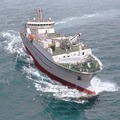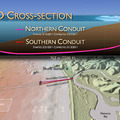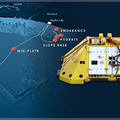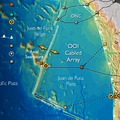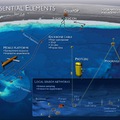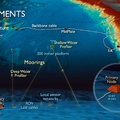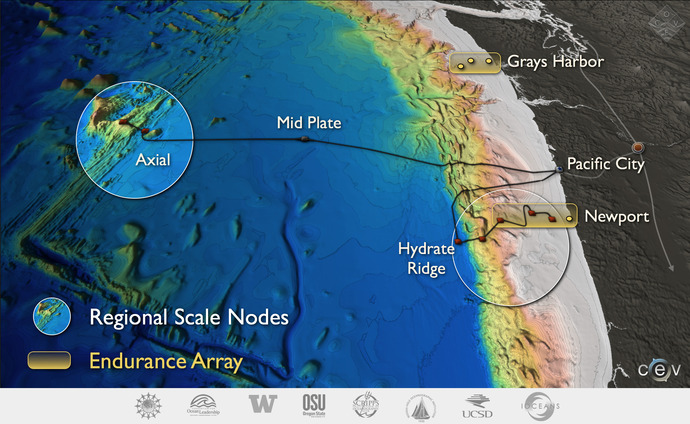...this infrastructure will forever change the ways we study and interact with our planet.
The telecommunications industry has a long history of connecting continents, countries, and cities via fiber-optic cables. Providing power and bandwidth, however, to distributed sensor arrays throughout the oceans is transformational. Indeed, this capability is one of the most novel components of the Ocean Observatories Initiative. The science and technological discoveries that this infrastructure will bring to international communities will forever change the ways we study and interact with our planet.
The Primary Infrastructure for the OOI Regional Scale Nodes uses cables to distribute power from land to the deep sea over 400 km away and to provide two-way communications between land and sea. Up to 200 kW of power and up to 240 Gigabits/second bandwidth are distributed from a land-based Shore Station to subsea terminals (Primary Nodes) at ocean depths as great as 3000 meters on the Juan de Fuca tectonic plate and throughout the water column.
The network will feature two submarine cables (called Backbone Cables) extending from the Shore Station to the Hydrate Ridge study site, the Coastal Scale Nodes Endurance Array to the south, and the Axial Seamount study site on the Juan de Fuca Ridge. The Backbone cable connects the Shore Station to the Primary Nodes, which are distribution centers for extension cables that provide direct access to the specific sites of scientific interest.
The Primary Nodes, or subsea terminals, have connection points for instruments and underwater robots. The continuous flow of power and availability of bandwidth allow continuous, real-time interactive science experiments at the seafloor and on moorings that extend from the seafloor to the ocean surface. Using the same kind of equipment used by the subsea telecommunications industry provides the high reliability needed for a system with a planned lifetime of 25 years.
A Backhaul System, which includes dedicated high-bandwidth (up to 240 Gb/s) terrestrial telecommunication cables, provides Internet connectivity from a Shore Station to the Internet through a CyberPop in Portland, Oregon. The CyberPop provides some data storage, but predominantly serves as a data-video imagery routing station to distribute two-way information over the Internet in real-time. The Shore Station houses Power Feed Equipment to convert utility power to high voltage (up to 200 kW) regulated and controlled power for each of the submarine cables that runs from the Shore Station into the ocean. Also included in the Shore Station is Line Termination Equipment that has the optical drivers and receivers for the submarine cables that terminate in the Shore Station. A Cable Landing provides the transition for the submarine cables from the ocean bed through buried conduits to the Shore Station.

